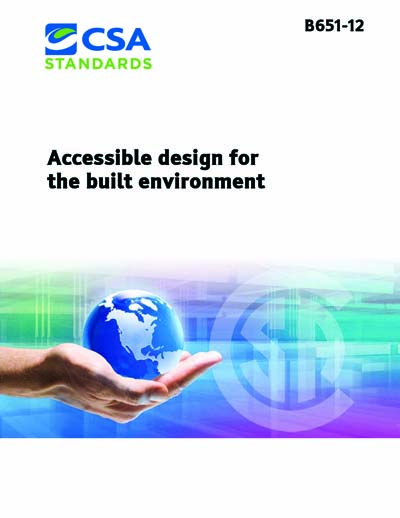Historical
CSA B651-2012 (R2017)
B651-12 - Accessible design for the built environment
The PDF format of this product is accessible to users of screen reading software. Update #1 to this standard is available. To download any updates and/or register for email notification of future updates click here
Preface
This is the fourth edition of B651, Accessible design for the built environment. It supersedes a previous 2004 edition, and two earlier editions entitled Barrier-Free Design, published in 1995 and 1990. This Standard contains requirements for making buildings and other facilities accessible to persons with a range of physical, sensory, or cognitive disabilities. It was developed to fulfill an expressed need for a national technical standard that covers many different types of buildings and environmental facilities, and can be referenced in whole or in part by a variety of adopting agencies or jurisdictions.Scope
1.1 PurposeThis Standard specifies technical requirements on how to make buildings and the exterior built environment accessible and safely usable by persons with physical, sensory, or cognitive disabilities. Commentary:- (1) Temporary buildings and facilities provided for public use should also comply with the technical requirements of this Standard. Such temporary facilities may include teaching spaces, reviewing stands, exhibit areas, bleachers, first-aid facilities, or pedestrian passageways around construction sites. (2) Where public access is permitted during construction, renovation, or maintenance of a facility or an exterior environment, the requirements of this Standard should be respected to provide safe and equitable use for everyone.(3) Some people with disabilities may have requirements beyond the levels addressed in this Standard.
- (1) When designing for specific individuals, their particular abilities and preferences should betaken into account. For example, some people prefer to transfer to or from a wheel chair towards their preferred side when using toilet facilities. (2) If a facility is primarily to serve children, dimensions and other provisions should be adjusted to make them suitable for children.
Content Provider
CSA America, Inc. [csa]






